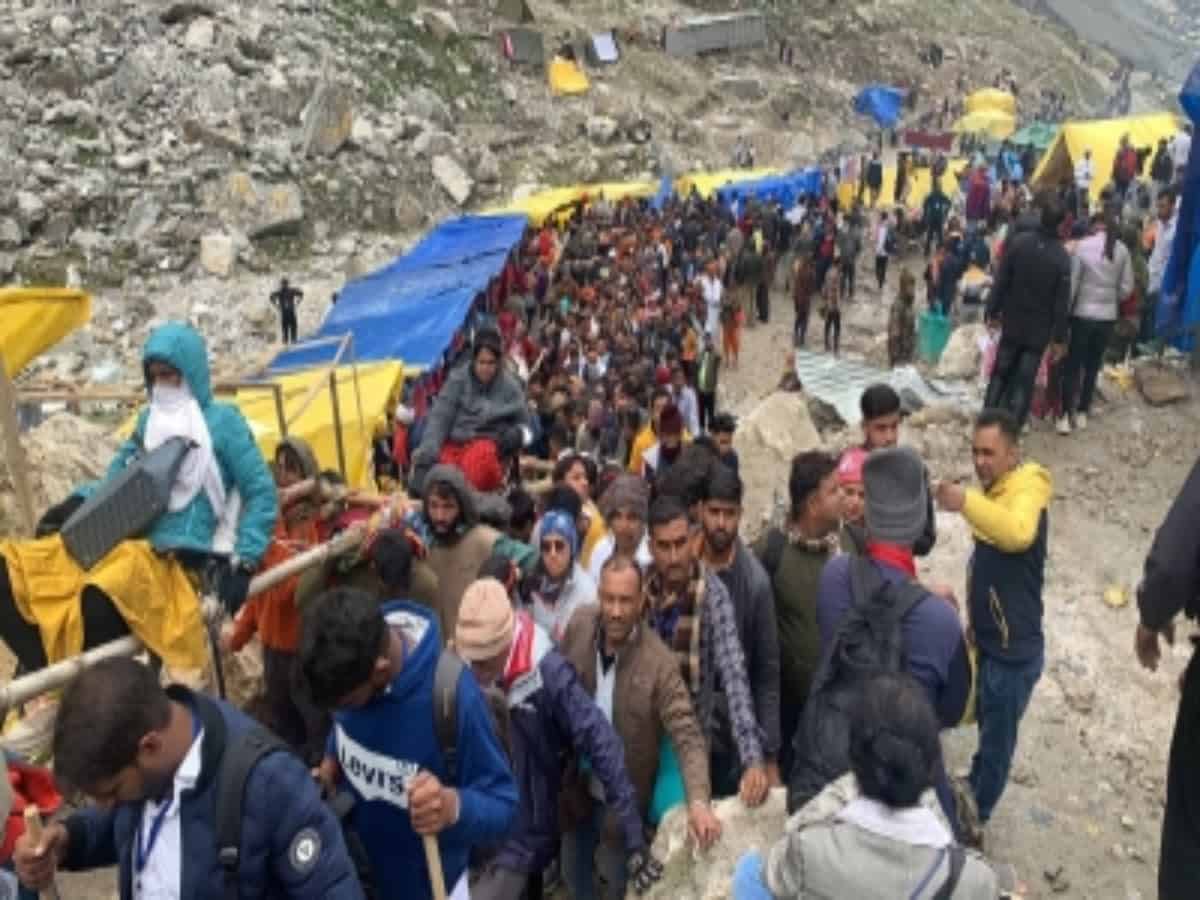
A constitution bench of the Supreme Court of India will commence day to day hearing on Article 370 from tomorrow – August 2. That is a legal and constitutional matter, which the apex court will hear and decide in due course of time.
But August 2 has a special resonance for the people of Jammu and Kashmir, particularly for more than eight million people in the Valley. It is a throwback to this day of August 2000, when the then Prime Minister Atal Behari Vajpayee had offered a glimpse of his vision on Kashmir – saying that the talks with the stakeholders will be held “Insaniyat ke Diyaren mein” ( Within the parameters of humanity).
This phrase became a swan song in Kashmir, and it still resonates when they recall Vajpayee and his push for reconciliation and peace. Later on, it was expanded in the three-point mantra to seek solution to Kashmir crisis – “Insaniyat, Kashmiriyat and Jamhooriyat“ ( Humanity, Kashmir ethos of co-existence and democracy).
It was on the afternoon of August 2, 2000, while addressing a press conference at the iconic Nehru Guest House at Chehma Shahi, he stated that the dialogue with the Hurriyat Conference will be held Insaniyat ke diayren mein”- that is within the parameters of humanity. He stated this, in response to a question from a reporter who wanted to know what were the preconditions for dialogue (with Kashmiri separatist).
Vajpayee, the poet, had answered it in his own style, leaving everyone in the room stunned. The people filled with the room of seasoned, inquisitive, information seeking journalists of that era, were so excited and overwhelmed that they did not ask the supplementary. All of them were convinced that Vajpayee has changed the dynamics of the dialogue and that he was a man of his word.
Such was the power of his mantra that Narendra Modi, who succeeded him as Prime Minister 10 years later in 2014, also reiterated that he too would approach the same approach toward Kashmir. The banner in the backdrop of his rally at Sher-e-Kashmir Cricket Stadium, Srinagar, had three words emblazoned in bold. That was December 8, 2014, Kashmir had suffered the worst-ever floods in a century. This was his first rally in Srinagar, in which Modi reiterated that he would abide by the Vajpayeean approach toward Kashmir.
Coming back to August 2, 2000, Vajpayee, through his “ talks within the parameters of humanity“ mantra – there was a background of what had happened on July 31/August 1 night in South Kashmir, where 99 people were massacred in Pahalgam and other areas – in which Amarnath pilgrims, non-local labourers were killed by militants. And, on July 24, the indigenous but deeply pro-Pakistan group Hizb-ul-Mujahadeen‘s “Commander-in-chief” Majid Dar, declared a unilateral ceasefire, which was endorsed by the group’s Pakistan -based Supremo Syed Salah-ud-Din – who now figures in the most wanted list. Majid Dar, had announced that “it’s the time when we should reflect what has been achieved by so many deaths and destruction, nothing, and if we continue this path of guns for 10 more years, nothing will be achieved.” The tone as decisive and prescient – as even after 20 more years of fighting, though he did not live to see further death and destruction in Kashmir, nothing was achieved. His statement was hailed by the Indian leadership of the day.
On August 2, 2000, Vajpayee laid the foundation for a new vision of Kashmir. Studied against the backdrop of the pre-announcement and after, this “Insaniyat ke diaren mein” was not in contradiction to the Indian Constitution, but it was a step to give the people of Kashmir a sense of belongingness., which was dented by several measures. What he offered was a path in which the military solution was ruled out. It was a heart-to-heart conversation that he opened in which the issue of the Kashmiri identity was at the core, and at the same time it was aimed at liberating them from the cult of guns on their own.
At this point, it should not be forgotten that the National Conference government, led by Farooq Abdullah, had passed an autonomy resolution in the state legislature with more than a two-third majority vote. The passage of the resolution on July 1, 2000, after a very vibrant debate, during the special session of the legislature, was a historic moment. NC celebrated, what it called to have brought his promise of the restoration of autonomy to a logical conclusion. After the resolution was passed, Farooq Abdullah stated in very clear terms that “though we have passed the resolution, we are open to discussion with the Centre on it, as we are willing to hear from them “
He wanted to start a self-realization and evolution process, reminding them of their ethos and human values in which guns had no place. Again, on November 7, 2015, Modi, during his rally, committed himself to doing what Vajpayee had outlined as a roadmap. He met his Pakistani counterpart Nawaz Sharif in Paris on the sidelines of the Conference of Parties on climate change in Paris on November 30, 2015. Twenty-five days later – on December 25, Modi surprised the subcontinent when he took his flight from Kabul to land in Lahore to reach out to Pakistani leadership. That was on December 25, 2015. That was a typical example of the Vajpayeean spirit.
Footnote – On August 2, 2019, Amarnath Yatra was stopped, pilgrims and tourists were sent packing to their homes in different parts of the country from Kashmir Valley because the army and the state administration had discovered a major threat to the visitors. Three days later, Article 370 was abrogated. And, on August 2, 2023, Amarnath Yatra is progressing, more than four lakh pilgrims have visited so far.



